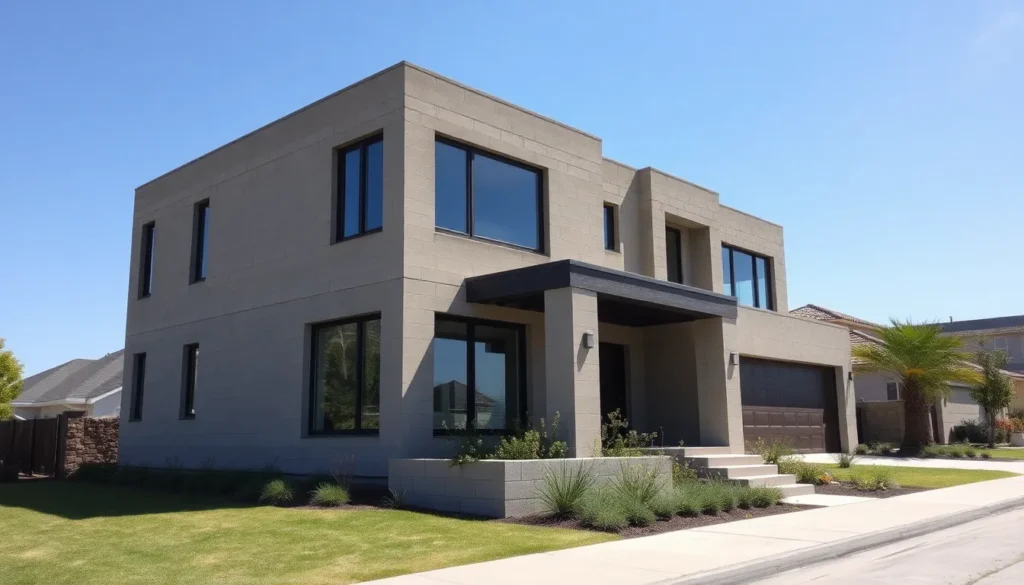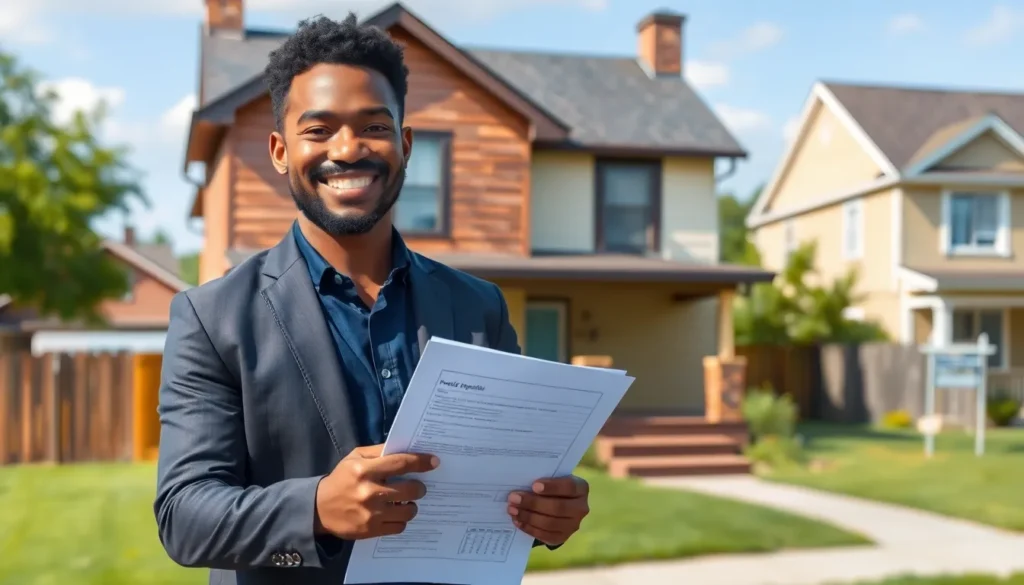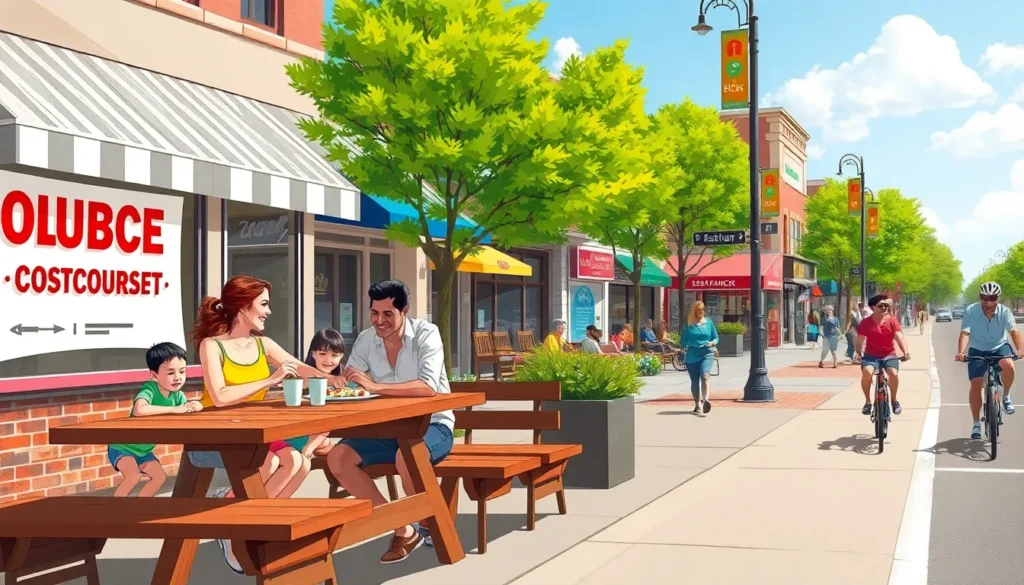Navigating the world of home loans can feel like trying to find a needle in a haystack—especially when it comes to down payments. FHA loans are a popular option for many homebuyers, thanks to their lower down payment requirements. But how much should someone really save before diving into the housing market?
Table of Contents
ToggleUnderstanding FHA Loans
FHA loans offer homebuyers an accessible route to homeownership, particularly for those with limited savings. These government-backed loans are designed to make housing more affordable.
What Is an FHA Loan?
An FHA loan is a mortgage insured by the Federal Housing Administration. First-time buyers often choose this type of loan due to its lower credit score requirements. Lenders can approve borrowers with scores as low as 580 for a down payment of 3.5%. An alternative option allows those with scores between 500 and 579 to qualify with a 10% down payment. FHA loans typically require borrowers to pay mortgage insurance premiums, which protect lenders in case of default.
Benefits of FHA Loans
FHA loans offer several advantages that make them attractive to homebuyers. Lower down payment requirements ease the barrier to homeownership. Flexible credit guidelines accommodate a wider range of financial situations. Additionally, competitive interest rates often apply, translating to lower monthly payments. These loans support various property types, including single-family homes, multifamily properties, and certain condos. Overall, FHA loans serve as an effective strategy for buyers seeking affordability and support in the housing market.
Down Payment Requirements

Understanding the down payment requirements for FHA loans is crucial for prospective homebuyers. FHA loans offer flexible options tailored for individuals with varied financial backgrounds.
Minimum Down Payment for FHA Loans
The minimum down payment for FHA loans depends on the borrower’s credit score. Borrowers with credit scores of 580 or higher typically qualify for a 3.5% down payment. For those with scores ranging from 500 to 579, a 10% down payment is necessary. This structure allows many first-time homebuyers to enter the market with a lower upfront cost, making homeownership more accessible.
Factors That Influence Down Payment Amount
Several factors determine the specific down payment required for an FHA loan. Credit score plays a significant role, where higher scores lead to lower down payment percentages. Employment stability also influences lenders’ decisions, as consistent income provides reassurance. Additionally, the home’s purchase price affects the overall down payment amount, with more expensive properties requiring more upfront capital. Individual financial circumstances, such as existing debts, further shape these requirements. Understanding these factors helps buyers plan their finances effectively.
Budgeting for Your Down Payment
Budgeting effectively for a down payment remains crucial for potential FHA loan borrowers. It directly influences homeownership readiness.
Saving Strategies for Your Down Payment
Implementing smart saving strategies can help build the necessary funds for a down payment. Setting a specific savings goal aids in tracking progress. Utilizing high-yield savings accounts maximizes earnings on saved funds. Automating transfers to savings accounts consistently promotes discipline in saving. Additionally, exploring grant programs or down payment assistance options can provide further financial support. Assessing household budgets identifies areas for cutbacks, allowing increased savings over time.
Other Costs to Consider
Homeownership entails various additional costs beyond the down payment. Closing costs typically range from 2% to 5% of the loan amount, requiring budgeting familiarity. Home inspection fees ensure properties meet standards and typically cost between $300 and $500. Homeowners’ insurance protects against potential damages, with annual premiums varying significantly based on location and property type. Property taxes, often assessed annually, also demand financial planning, as these costs can fluctuate. Awareness of these expenses enables prospective buyers to prepare better for the full financial responsibilities of homeownership.
Alternatives to FHA Down Payments
Several alternatives exist for those exploring down payment options aside from FHA loans.
Conventional Loans
Conventional loans offer flexibility in down payment requirements. A borrower may qualify for a conventional loan with a down payment as low as 3%, depending on creditworthiness and lender policies. Stronger credit scores often result in lower down payments. Additionally, private mortgage insurance is typically required if the down payment is below 20%, increasing the overall monthly payment. Prospective homeowners can also consider these loans for potentially lower interest rates, depending on their financial situation.
State and Local Assistance Programs
Many state and local assistance programs help first-time homebuyers with down payments. These programs vary by location, offering financial aid in the form of grants or low-interest loans. Some programs may provide up to 5% of the home’s purchase price. Eligibility often includes income limitations and requirements for first-time homebuyers. Individuals should research specific offerings in their area to discover assistance options. By leveraging these programs, buyers can reduce upfront costs significantly and access homeownership opportunities more easily.
Navigating the world of FHA loans can be a game-changer for aspiring homeowners. With its flexible down payment options and accommodating credit score requirements, it opens doors for many who might otherwise struggle to enter the housing market. Understanding how much to save for a down payment is crucial for financial success and homeownership.
By budgeting effectively and exploring various saving strategies, potential buyers can make informed decisions that align with their financial goals. Additionally, considering alternatives like conventional loans or local assistance programs can further enhance affordability. With the right preparation and knowledge, homeownership becomes an achievable dream for many.













